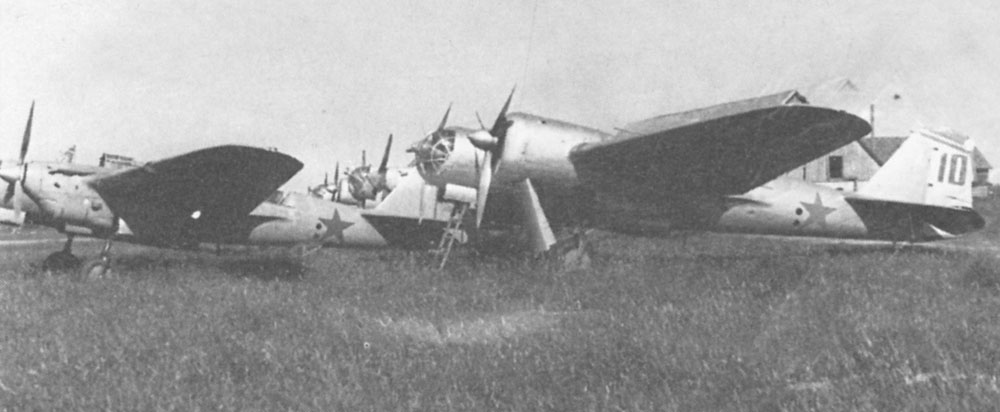
Above:
photo of two SB with typical prewar liveries. The AE-8 aluminum painting, typical of the SBs with flat coolers, was distinguishable in photos from the gloss AE-9 grey painting of the pointed-cowlings SBs.
The planes were of 50 SBAP, photographed on the Mitava airport where 20 of them were lost on 23 June 1941.
Yellow 8 of 35 SBAP
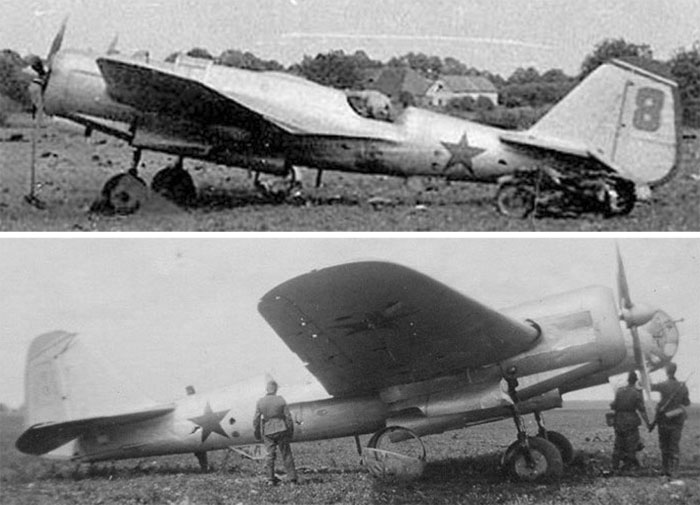
Plane yellow (?) 8 of 35 SBAP, 4 SAD was photographed on Platone airport in June 1941. the unit was moved on this airport on 22 June 1941.
It features the old-fashioned aluminum livery characteristic of the most part of flat-engined SB with M-100A or M-103.
The plane shows the (presumably) red-white markings of 35 SBAP on the rudder. This emblem looks the same of 50 SBAP, at least on bw photos.
The plane was updated with a MV-3 turret, but the skinning around it was left open. A protruding MV-2 turret is installed on the ventral hatch.
Below: 3 views of yellow 8.
The prewar positioning of the national emblems over the AE-8 aluminum livery is visible, as the prewar painting of the prop blades with aluminum front and partially black rear.

Black 4 of 35 SBAP
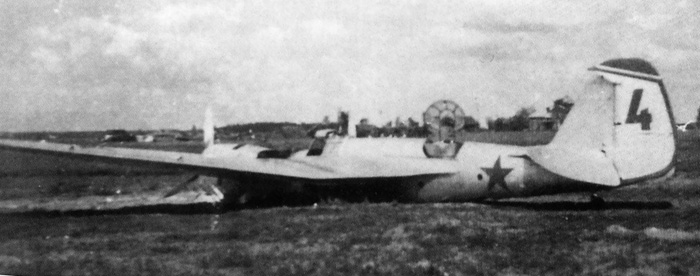
Plane 4 was photographed in some airport of the Baltic area.
It shows the typically painted rudder of 35 SBAP, probably red. The number seems darker, so it could be black; this probably means that the plane belongs to a different squadron of Yellow 8.
The plane seems an old one engined with M-100 or 100A because of the windshield of the low type, and only one rounded window is located on each side of the fuselage. Despite this, it was updated with an MV-3 turret in 1940/41.
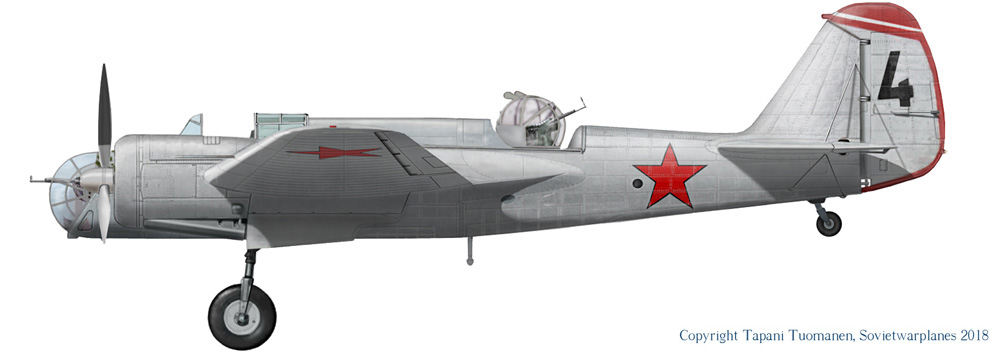
Red 9 of 40 SBAP
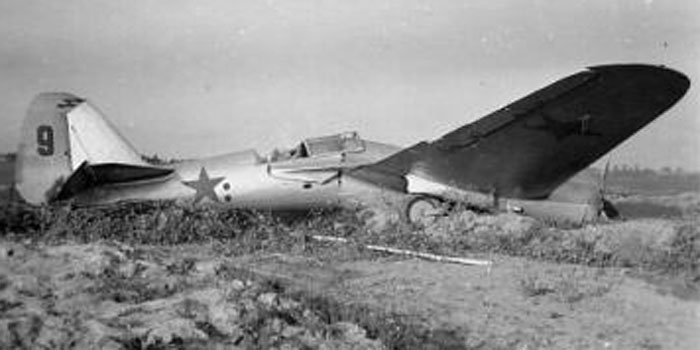
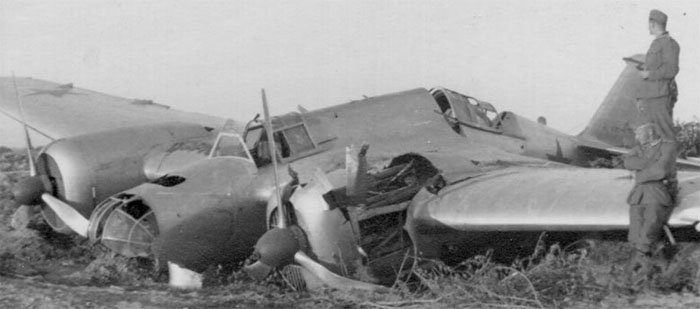
The prewar emblem of 40 SBAP was a small broken arrow on the top forward edge of the rudder. The color could have changed according to the squadron within the regiment.
Aside:
Both the number and the emblem of plane 9 seem darker than the red star on the fuselage, but it could be a matter of different reflection because the rudder is turned on the right. Difficult to say if they were black, red or what else.
Two torches for night landings are visible under the right wing, a very common device on this type.
the plane was photographed in the Baltic area.
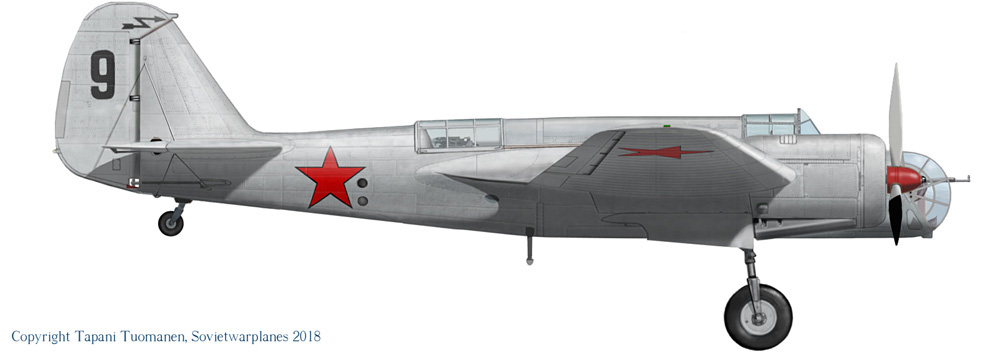
Red 11 of 40 SBAP
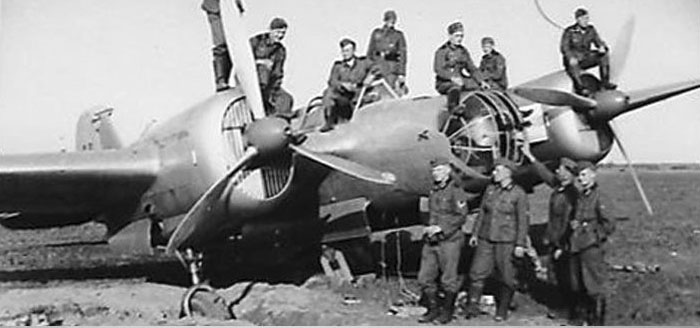

Aside:
two photos of plane (red?) 11 of 40 SBAP was left at the Birzhai airport in summer 1941, when it was captured by Germans.
The spinners are painted in some squadron color, but the photo above shows it lighter than the number and the arrow, while the photo below shows it dark. The real colors can only be guessed. It could be yellow, that appears light on some films and as dark as black on other ones.
Other images of planes of the same unit but with sharp cowling and grey livery can be found at
Soviet SBs during Barbarossa: grey prewar standard
9 SBAP
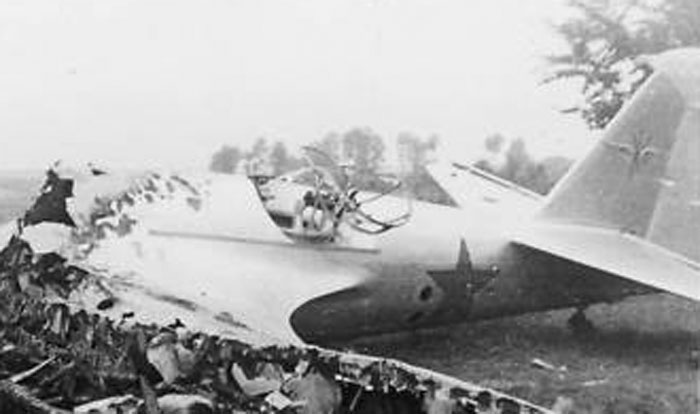
9th SBAP had a regimental emblem that was derived from that of the Soviet Air Force.
While the emblem of the V-VS (Air Force) was a pair of yellow wings with a two-bladed propeller, 9 SBAP had a pair of yellow wings with a black bomb and a red bolt.
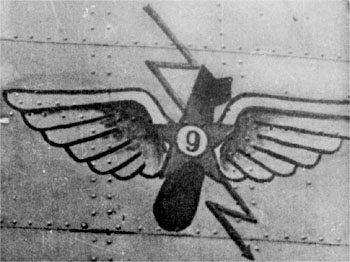
Aside:
This wrecked plane has the emblem of 9 SBAP on the fin, and apparently no number; the finish look aluminum, characteristic of flat-cowlings SBs.
Other images of SB of the same unit, with sharp cowlings and grey livery, can be found at:
Soviet SBs during Barbarossa: grey prewar standard
Red 4 of 39 SBAP

Plane red 4 of 39 SBAP was photographed in Belarus.
It looks a standard SB 2M-100A or 103, and its most interesting visual characteristic is the regimental emblem, a red outline on the rudder and a full red trim tab.
Plane E of 121 SBAP
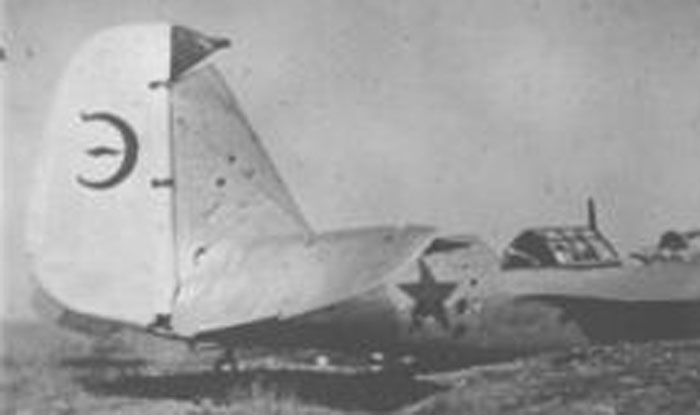
Partial image of a wreck of a plane of 121 SBAP in Belusha airport, Belarus, June 1941.
The aluminum-painted plane, probably a standard flat-cowlings SB 2-M103, reported the letter E, for Eskadrilya, denoting a squadron commander.
The red (?) horn of the rudder denotes the regiment.